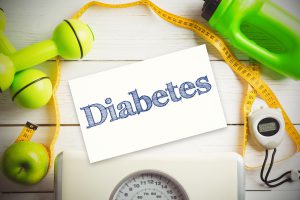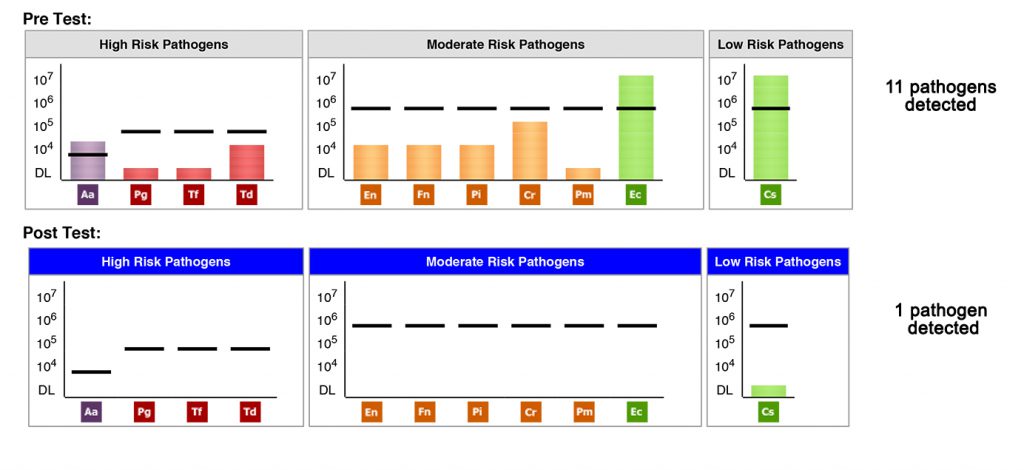
Background: This patient is a 38-year-old female, who works as a dental hygienist. She was recently diagnosed with Type II Diabetes. In agreement with her medical doctor, she has committed to diet and lifestyle changes to control her diabetes before the consideration of medication. These lifestyle changes include regular exercise and eliminating sugar. When this hygienist presented in my chair, her chief complaint was “When it comes to my diabetes, I know what to do, I just need to do it! As a hygienist, I want to know I am doing everything possible orally.” Her last dental visit was 8 weeks ago and her home care routine consists of brushing 2 times a day with an electric toothbrush, flossing daily and waterpiking 1 time a day. During her periodontal assessment, there was zero bleeding, scattered 4mm probe depths in the posterior with noted localized areas of 1mm recession. Around her posterior crowns, the tissue had a gray tint, most likely due to lack of circulation, with a lack of stippling. There was residual light calculus around the crown margins with radiographic evidence of posterior bone loss.
Challenge: Knowing the scientific information that clearly confirms the bi-directional relationship with diabetes and periodontal disease, our goal is reduce the periodontal pathogens to improve the diabetic status.
Solution: We recommended OralDNA®’s MyPerioPath® to identify any bacteria complicating the diabetes and to personalize the treatment plan. The specimen was secured on 9/10/2015. The periodontal therapy, conducted in 2 appointments, included removal of residual marginal calculus around crowns, complete biofilm disruption with ultrasonic slim line inserts, hand scaling with curettes and subgingival airpolish. Although there was a systemic antibiotic consideration, the patient wanted to see her response to the therapy first so she did not take the antibiotic. Her home care remained the same as she continued the diet and lifestyle changes. A post therapy MyPerioPath® (aka MyPerioProgress®) was performed 3/10/2016.
Resolution: The periodontal changes were favorable; the color and texture of tissue presented healthy and the 4 mm pockets reduced to 3mm. The MyPerioPath post-therapy results (MyPerioProgress®) showed a dramatic shift in the bacterial load. More importantly, when the patient presented to her medical doctor to evaluate her diabetic control, she had reversed her diagnosis. Her lab tests confirmed normal A1C and blood glucose levels.
Would she have gotten the same great reduction in pathogens if she had not changed her diet and lifestyle? Did the pathogens contribute to her diabetes or did the imbalance of blood sugar contribute to the proliferation of pathogens? We may never know the answer to these questions because she has chosen to stay on her path of optimum health. This patient is most grateful that she had the opportunity to test pre-therapy for periodontal pathogens and that she had a relatively simple treatment to eliminate the pathogens, which was confirmed by a post therapy test. It is amazing; the positive influence treatment has had on her diabetic diagnosis. This case highlights the role of dental care with overall health, the need to co-manage patients and the need for patient cooperation. In my opinion, the patient’s diet and lifestyle changes contributed to a successful outcome.
For more information on how to become an OralDNA Provider – scan HERE: 
- Words of Wisdom from Jan Lazarus RDH - August 5, 2022
- Case Study: Dental Hygienist with Type II Diabetes - January 26, 2018

